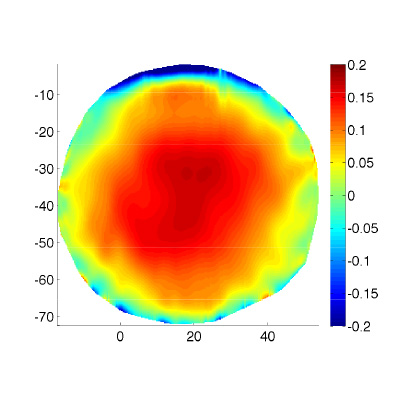
The characterization of skin biomechanics is essential for a wide variety of applications, from modeling the tissue-device interface of medical de- vices to tissue engineering. The anisotropic properties of skin arise from the collagen-elastin fiber microstructure and can have important implications for applications such as creating accurate models of an amputee’s residual limb, quantifying changes in microstructure during scarring, designing artificial skin, and imaging for cancer detection.
Our research aims are
- Develop a bulge inflation test for human skin that uses DIC for strain mapping and for measuring mechanical anisotropy.
- Develop a thin-shell analysis method that accounts for the effects of bending to determine the stress strain response response measured by inflation
- Develop a nonlinear anisotropic model for skin tissues that accounts for the collagen structure.
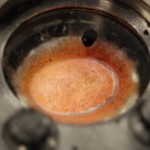
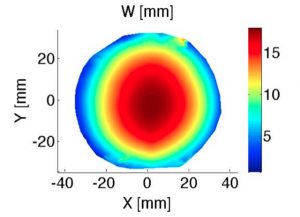
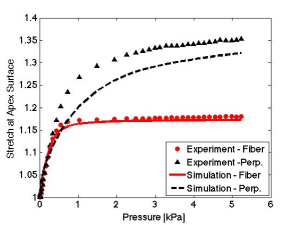
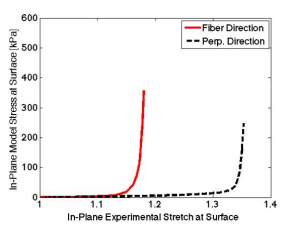
Figure 1: Inflation test of skin showing (a) the skin specimen speckled for 3D digital image correlation (DIC); (b) the contour of the out-of-plane displacement from 3D-DIC; (c) finite element simulations to fit parameters of anisotropic hyperelastic model to the pressure-stretch response, and (d) the anisotropic stress-stretch behavior of the skin sample obtained from the hyperelastic model fit to the inflation test.
Collaborators
Liming Voo, Ph.D., Applied Physics Lab

